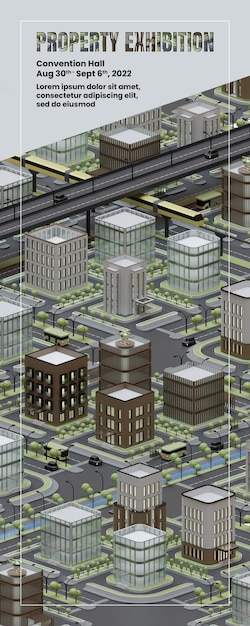Transit-Oriented Development: Best Practices for Sustainable US Cities

Transit-oriented development (TOD) best practices in the US focus on creating vibrant, mixed-use communities centered around public transit, promoting walkability, reducing car dependence, and enhancing sustainability through strategic urban planning and community engagement.
Are you looking to build a more sustainable and livable urban community? Then understanding the best practices for implementing transit-oriented development (TOD) to create more sustainable and livable urban communities in the US is essential to urban planning and community development.
Understanding the Core Principles of Transit-Oriented Development
Transit-oriented development (TOD) represents a paradigm shift in urban planning, moving away from car-centric designs towards communities that prioritize public transportation, walkability, and mixed-use development. Understanding the core principles of TOD is crucial for creating sustainable and livable urban environments. TOD aims to integrate land use and transportation, fostering vibrant, compact, and mixed-income neighborhoods centered around transit hubs.
The fundamental goal of TOD is to reduce dependence on private vehicles, thereby mitigating traffic congestion, air pollution, and greenhouse gas emissions. By creating environments where residents, employees, and visitors can easily access daily needs and amenities without relying on cars, TOD promotes healthier lifestyles, reduces transportation costs, and enhances overall quality of life.
Key Characteristics of TOD
Successful transit-oriented development incorporates several key characteristics that contribute to its effectiveness and appeal. These characteristics work together to create a cohesive and sustainable community.
- Density: Higher population and job densities near transit stations create a critical mass of users who can support transit services and local businesses.
- Diversity: A mix of residential, commercial, and recreational uses provides opportunities for people to live, work, and play in the same area, reducing the need for long commutes.
- Design: Pedestrian-friendly streetscapes, bike lanes, and well-connected networks encourage walking and cycling, making it easy to access transit and local amenities.
- Destination: Locating key destinations such as schools, parks, and community centers near transit stations ensures that transit is a viable option for many trips.
In summary, the core principles of TOD revolve around creating compact, mixed-use, and pedestrian-friendly communities centered around public transit, which ultimately leads to more sustainable and livable urban environments.
Strategic Planning and Zoning for TOD Implementation
Effective strategic planning and zoning are the cornerstones of successful transit-oriented development. These processes shape the physical form of TOD projects and ensure they align with community goals and sustainability objectives. Strategic planning involves setting a clear vision for the TOD area, identifying key development opportunities, and establishing policies to guide future growth. Zoning regulations, on the other hand, implement the strategic plan by specifying permitted land uses, building heights, density requirements, and other development standards.
Careful consideration must be given to the location of transit stations and the surrounding land. Areas within a half-mile radius of transit stations are typically considered prime locations for TOD, as they are easily accessible to transit users. Zoning regulations should encourage higher density development in these areas, while also preserving neighborhood character and protecting sensitive environmental resources.
Thoughtful zoning regulations can facilitate the creation of mixed-use developments that include housing, retail, offices, and public spaces. This mix of uses creates vibrant, walkable neighborhoods where residents can live, work, and play without relying on cars. Zoning should also address parking requirements, encouraging shared parking facilities and reduced parking ratios to minimize surface parking lots and promote a more pedestrian-friendly environment.

Zoning Best Practices for TOD
Implementing best practices in zoning is essential for realizing the full potential of transit-oriented development. Several key zoning strategies can support TOD objectives.
- Form-Based Codes: These codes regulate the physical form of buildings rather than focusing solely on land use, promoting cohesive and attractive streetscapes.
- Incentive Zoning: Offering developers incentives such as density bonuses or expedited permitting in exchange for providing public benefits like affordable housing or open space.
- Transit Overlay Zones: Creating special zoning districts around transit stations that allow for higher density development and mixed uses.
Strategic planning and zoning are integral to guide the implementation of TODs, ensuring that development aligns with community goals, promoting sustainability, and creating thriving, livable urban communities.
Community Engagement and Stakeholder Collaboration
Successful transit-oriented development requires meaningful community engagement and collaboration among various stakeholders. This collaborative approach ensures that TOD projects reflect the needs and aspirations of the local community while addressing potential concerns and fostering a sense of ownership. Community engagement involves actively seeking input from residents, business owners, community organizations, and other interested parties throughout the planning and development process.
By involving the community early and often, planners and developers can gain valuable insights into local priorities, identify potential challenges, and build support for TOD projects. Effective community engagement strategies include public meetings, workshops, surveys, and online forums. These platforms provide opportunities for community members to share their ideas, ask questions, and provide feedback on proposed plans and designs.
In addition, stakeholder collaboration is crucial for aligning the interests of various parties involved in TOD projects, such as government agencies, developers, transit authorities, and community groups. Regular communication and coordination among these stakeholders can help streamline the development process, resolve conflicts, and ensure that projects deliver maximum benefits to the community.
Strategies for Effective Community Engagement
Several strategies can enhance community engagement and foster collaboration among stakeholders, ultimately leading to more successful and sustainable TOD projects.
- Transparent Communication: Providing clear, accurate, and timely information about TOD projects, including potential impacts and benefits.
- Inclusive Participation: Ensuring that all community members have opportunities to participate in the planning process, regardless of their background or circumstances.
- Collaborative Decision-Making: Involving community members in the decision-making process, empowering them to shape the future of their neighborhoods.
Community engagement and stakeholder collaboration are critical for creating TOD projects that are responsive to local needs, supported by the community, and contribute to the long-term sustainability of urban areas.

Integrating Affordable Housing into TOD Projects
Integrating affordable housing into transit-oriented development projects is essential for creating inclusive and equitable communities. Affordable housing ensures that people of all income levels can benefit from the opportunities and amenities provided by TOD, such as access to jobs, education, and transportation. Without intentional efforts to include affordable housing, TOD projects can lead to displacement of low-income residents and exacerbate existing inequalities.
Several strategies can be used to promote the integration of affordable housing into TOD projects. One common approach is to require developers to include a certain percentage of affordable units in new residential developments. This can be achieved through inclusionary zoning policies, which mandate that a portion of new housing units be set aside for low- and moderate-income households.
Best Practices for Affordable Housing in TOD
Implementing best practices is critical for creating successful affordable housing within TOD projects that truly benefits the community. Specific factors to address include:
- Financial Incentives: Developers can be offered financial incentives, such as tax credits or subsidies, to offset the cost of including affordable housing in their projects.
- Land Use Regulations: Zoning regulations can be modified to allow for higher density development and mixed-use projects that include affordable housing.
- Community Land Trusts: These non-profit organizations can acquire land and develop affordable housing that remains permanently affordable to low-income residents.
Integrating affordable housing into TOD projects is crucial for creating inclusive, equitable, and sustainable communities that benefit all residents, regardless of their income level.
Promoting Sustainable Transportation Choices
A key goal of transit-oriented development is to promote sustainable transportation choices by reducing reliance on private vehicles and encouraging the use of public transit, walking, and cycling. Achieving this goal requires a multifaceted approach that includes investing in high-quality transit infrastructure, creating pedestrian- and bicycle-friendly environments, and implementing policies that discourage car use.
High-quality transit infrastructure is the backbone of TOD, providing residents and visitors with convenient and reliable access to jobs, services, and amenities. This includes frequent bus and train services, well-maintained stations and stops, and seamless connections between different modes of transportation. In addition to transit improvements, creating pedestrian- and bicycle-friendly environments is essential for making sustainable transportation choices attractive and convenient.
Well-designed sidewalks, bike lanes, and crosswalks can make it easy and safe for people to walk and cycle to transit stations, local businesses, and other destinations. TOD should also incorporate bike-sharing programs and secure bike storage facilities to further encourage cycling.
Policies to Discourage Car Use
In addition to infrastructure improvements, several policies can be implemented to discourage car use and promote sustainable transportation choices:
- Parking Management: Reducing the supply of parking spaces and implementing pricing strategies that make parking more expensive.
- Transportation Demand Management (TDM): Offering incentives for employees to use alternative modes of transportation, such as public transit, carpooling, and cycling.
- Congestion Pricing: Charging motorists a fee to drive in congested areas during peak hours.
By investing in transit infrastructure, creating pedestrian- and bicycle-friendly environments, and implementing pro-sustainable policies, TOD can lead to significant reductions in car use and promote healthier lifestyles.
Measuring the Success of TOD Initiatives
Measuring the success of transit-oriented development initiatives is essential for evaluating their effectiveness and making adjustments as needed. Several indicators can be used to assess the impacts of TOD projects on transportation, land use, economic development, and social equity. Transportation indicators include measuring changes in transit ridership, vehicle miles traveled, and mode share.
Increased transit ridership and reduction of vehicle miles traveled are the most indicators of a successful TOD project. Land use indicators can assess the amount of new development occurring near transit stations, the mix of land uses, and the density of development.
Measuring the number of new housing units, jobs, and retail establishments created within the TOD area. Social equity indicators include measuring changes in housing affordability, access to jobs and services, and community demographics.
Key Metrics for TOD Evaluation
Evaluating the success of TOD requires tracking multiple performance metrics. These indicators help assess TOD’s varied impacts and guide improvements:
- Transit Ridership: Track changes in ridership on transit routes serving the TOD area.
- Vehicle Miles Traveled (VMT): Measure the reduction in VMT within the TOD area, indicating less car dependence.
- Mode Share: Monitor the percentage of trips made by different modes of transportation (transit, walking, biking, car) to assess shifts in travel behavior.
By carefully measuring the impacts of TOD initiatives, planners and policymakers can gain valuable insights into their effectiveness and make adjustments to improve their performance and maximize their benefits.
| Key Aspect | Brief Description |
|---|---|
| 🏘️ Mixed-Use Development | Combining residential, commercial, and recreational spaces for diverse needs. |
| 🚶 Pedestrian-Friendly Design | Prioritizing walkable streets and bike lanes for easy access to transit. |
| 🚆 Transit Integration | Centering development around public transit hubs for efficient mobility. |
| 💰 Affordable Housing | Ensuring housing is accessible for all income levels through inclusionary policies. |
Frequently Asked Questions
▼
The primary goal is to create vibrant, walkable communities centered around public transit, reducing dependence on cars and promoting sustainable urban living.
▼
Community engagement ensures that TOD projects align with local needs and preferences, fostering support and creating a sense of ownership among residents.
▼
TOD reduces car usage, lowers carbon emissions, promotes efficient land use, and supports healthier lifestyles through increased walking and cycling.
▼
Challenges include securing funding, addressing zoning regulations, managing community opposition, and ensuring the inclusion of affordable housing options.
▼
Affordable housing can be integrated through inclusionary zoning, financial incentives for developers, and by partnering with community land trusts to maintain affordability.
Conclusion
Implementing transit-oriented development in the US requires a comprehensive approach that integrates strategic planning, community engagement, and sustainable design principles. By prioritizing public transit, promoting mixed-use development, and fostering walkable environments, TOD creates more sustainable and livable urban communities for everyone.





